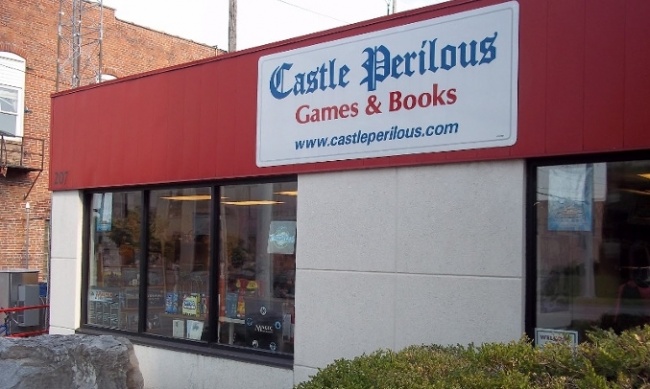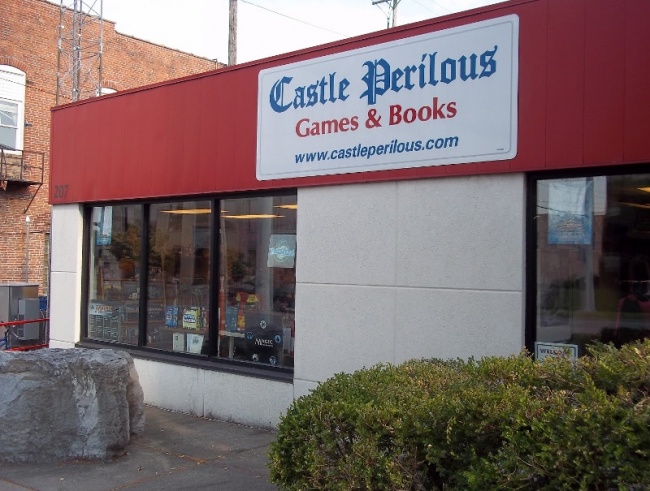Rolling for Initiative is a weekly column by Scott Thorne, PhD, owner of Castle Perilous Games & Books in Carbondale, Illinois and instructor in marketing at Southeast Missouri State University. This week, Thorne continues his discussion about the Minimum Advertised Pricing (MAP).
Following up from last week’s column on MAP (Minimum Advertised Price), and following in the footsteps of companies such as Games Workshop, Mayfair Games and Iello, this past week CMON became the latest company to announce a MAP policy. Incidentally, setting a MAP does not mean that retailers cannot sell these companies’ products at lower than the established MAP, as that would be vertical price fixing. What MAP means is that you cannot advertise on your website or, for those of you who use last millennium’s advertising methods, in a newspaper a price lower than the MAP to which the store agreed. A store could legitimately state “Prices so low we can’t advertise them” and have an online shopping cart set up to automatically discount Games Workshop’s products by 30% when a customer puts the game in the cart, then show the discounted price at checkout. It just could not show the discounted price with the game while the customer views it on the site.
Hopefully, you took the time to read over the article linked in last week’s column on the difficulty manufacturers have in policing MAP once they establish it. Remember, the reason for setting a MAP is to protect the company’s price branding. If you run a company putting out comparatively high priced products, such as Games Workshop or CMON do, it devalues your brand to have lots of web (and brick and mortar) stores discounting it. However, companies establishing a MAP run into a few problems once they do:
1. Amazon — Roughly 50% of all retail ecommerce takes place through Amazon’s website, either purchasing from Amazon itself or from sellers selling on Amazon’s website. Although Amazon may abide by MAP, the company will not kick sellers off the website for violating a manufacturer’s pricing policy. Amazon’s viewpoint is that it wants customers to get the best prices available and, while Amazon itself may abide by MAP (I spoke with one publisher at this year’s GAMA Trade Show who had refused to restock Amazon for 30 days because of Amazon’s violation of MAP), Amazon will only remove sellers from the site if the manufacturer can prove the product or experience is bad for consumers. For example, assuming the manufacturer could prove it, an Amazon seller selling factory seconds or damaged products as new or a reseller storing temperature sensitive products in the garage instead of a temperature controlled warehouse would get pulled. Amazon will also pull off products that a publisher can prove have been stolen. Generally, this involves serial marked product diverted from big box retailers and resold on Amazon.
2. Time — It takes a lot of time to enforce a MAP. Wusthof, for example, manufacturers a line of very high end knives and devotes time equivalent to one and a half employees just to enforce the company’s MAP. In addition, the company also employs Potoo Marketing, at a cost of several thousand dollars per year, to monitor Amazon for either unauthorized resellers or for authorized resellers selling below MAP. Similarly, both Tumi, a high end luggage manufacturer and PetSafe, which makes electric pet fences and similar accessories, have full time managers devoted to MAP enforcement. That’s a lot of time and money which many smaller manufacturers just don’t have.
3. What To Do? — What does a publisher do when they find a company violating MAP? Most of them welcome reports of sellers violating MAP, otherwise why establish the policy, but also handle them quietly and in-house, meaning stores have no idea if a manufacturer enforces its MAP or not. These policies run counter to what Andy Hoar, principal B2B ecommerce analysist at Forrester Research, says is a best practice. He recommends, if a publisher cuts off a store (or distributor) for violating MAP, they should make a demonstrative case out of it, sending out press releases and alerting the media, showing that the publisher does enforce its MAP. This policy runs counter to what nearly every game company in the industry does.
For these reasons, it can be difficult for a company to enforce its MAP, but as more publishers in the game industry adopt them, they are going to have to face and address them.
The opinions expressed in this column are solely those of the writer, and do not necessarily reflect the views of the editorial staff of ICv2.com.

Column by Scott Thorne
Posted by Scott Thorne on May 29, 2017 @ 2:54 am CT



